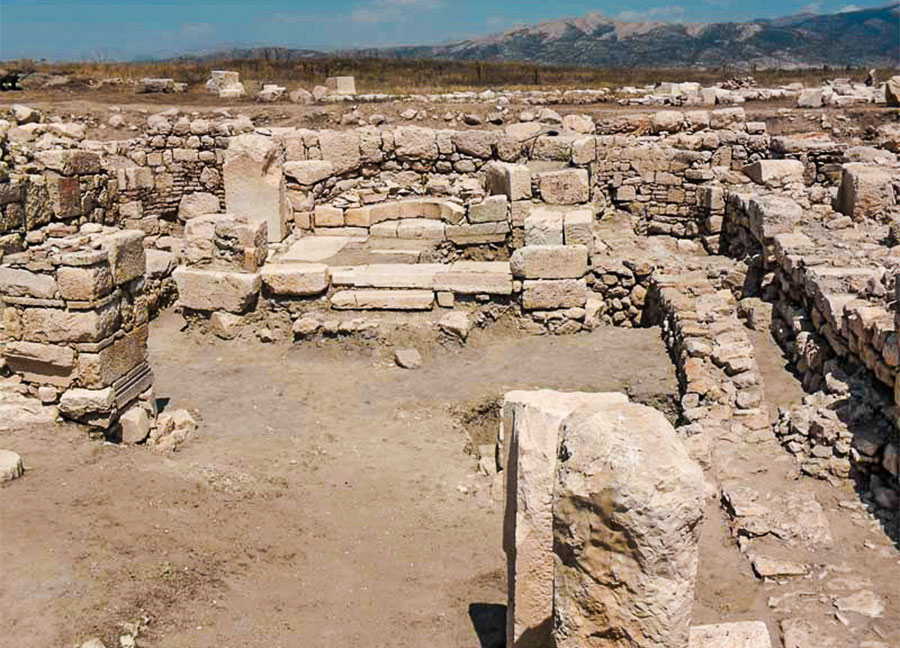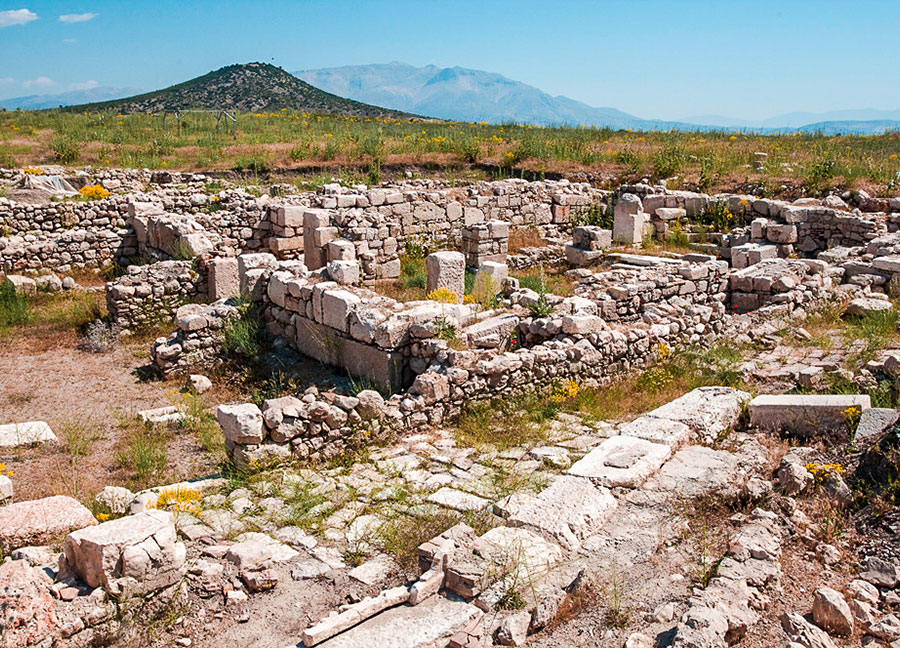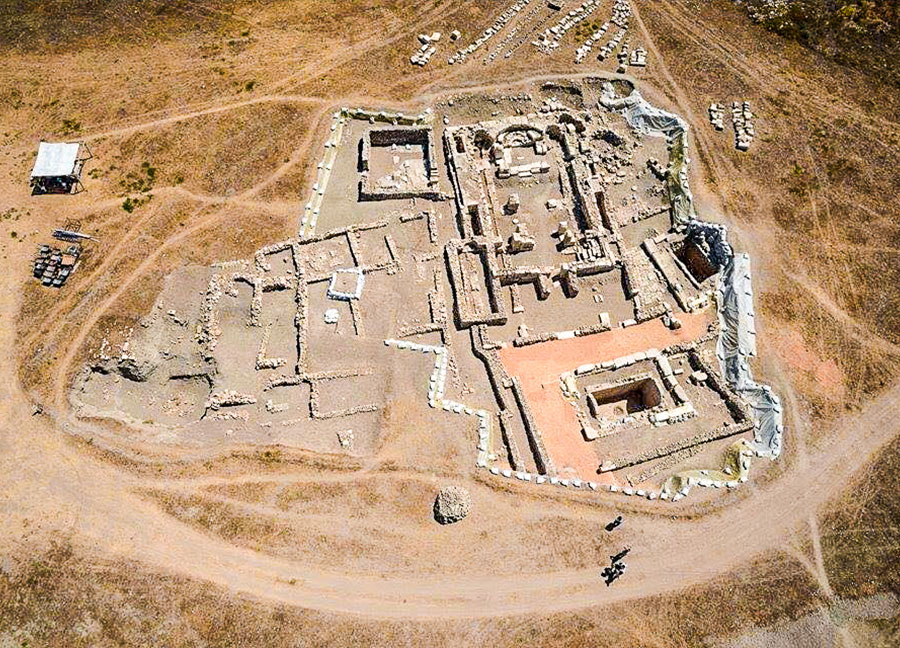Choma Ancient City is also called Hacımusalar or Beyler Mound. It is 15 km southwest of Antalya's Elmalı district center, between Hacımusalar and Beyler Villages. The word Choma, which comes from Hellenic, means 'hill, heap, mound'.
In Choma, where there is no definite information about its historical development, during the excavations that started in 1994, findings dating back to 3000 BC were found. It has been revealed that the city, where layers belonging to the Copper, Early Bronze and Iron Ages and Hellenistic, Roman and Byzantine Periods are seen, was used as a dense settlement.
Terraces can be seen on the mound's slopes 1040 meters above sea level, has a round appearance, has high sides and a hollow in the middle. Lycian-type sarcophagi and wall fragments are found scattered throughout the city. The adobe fortification wall on the east side and another sandstone city wall remnant supporting the mud-brick wall on the northern slope indicate that the settlement was well surrounded. There is a church in the middle of the city, which was divided into three phases and dated to the time period between the 5th and 11th centuries.
During the excavations in Choma Ancient City, wall paintings with human figures, plant and geometric motifs and mosaic ceilings were found. Unearthing items such as pottery and pottery used in rituals and the fact that Choma is included in the ancient bishop's lists prove that the ancient city could have been an important religious center in its time.








